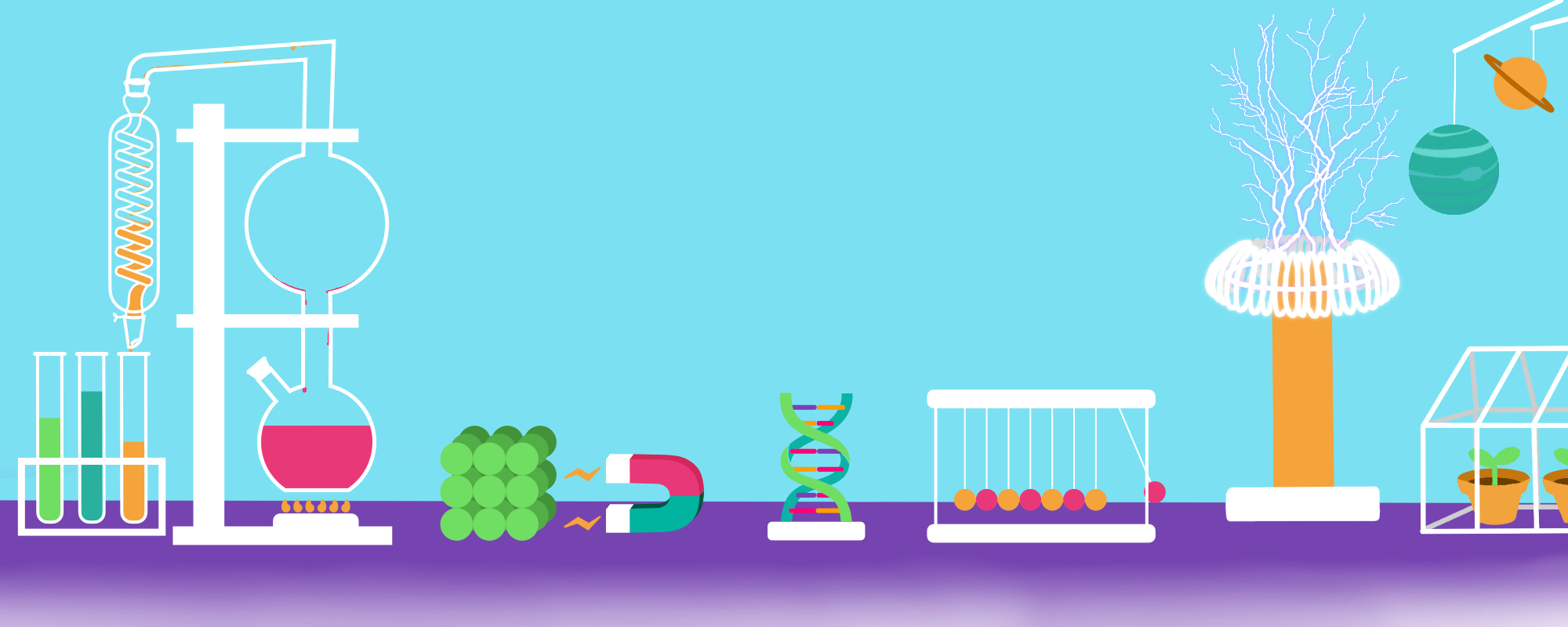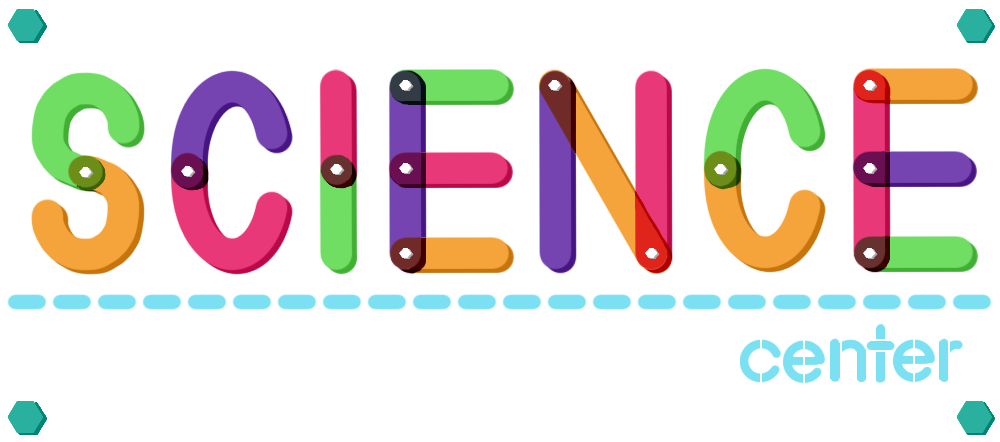Nuclear Words
This is the metapuzzle for the Science round, which uses the following 9 feeders:
| A Trip to the Museum | REPLICA |
| Brain Freeze | GEOMETRIC SNOW |
| Bridge Building | PROTEIN POWDER |
| Extrasensory | DEODORANT |
| H2No | ENCAMP |
| Natural Transformation | TANGRAM |
| One of the Puzzles of All Time | NORMAL BUNDLE |
| Scicabulary | SHAMROCK |
| World's Smallest Logic Puzzles | CHAOS DOMAIN |
TL;DR:
- The puzzle is a nuclear reactions puzzle where each atom corresponds to a word, each nucleon corresponds to a letter, and each local reaction corresponds to an anagram of the inputs into the outputs.
- Each atom / word is ordered, with letters being inputted in clockwise order starting at 9 o’clock.
- Letters can either be protons or neutrons; proton letters have odd parity in the alphabet, while neutron letters have even parity.
- There are two additional anagram mechanics: gamma emission can remove nucleons / letters, and electrons involved in reactions can change protons into neutrons or vice versa.
- The given graph is directed and acyclic, with the meta’s feeder answers / atoms eventually transformed into the output bigrams / “unstable atoms”.
- Combining the output bigrams yields our final answer.
At a first glance of the puzzle, we are given a diagram of groups of circles chaining into other groups of circles. Given that the puzzle title is “Nuclear Words”, and that the circles are generally one of two colors red and blue, we suspect that the theming of the puzzle is that of nuclear reactions. In fact, if we look at the Wikipedia page for Nuclear reactions, we see that the example diagram is actually quite similar in presentation to the given diagram here.
With the theming of nuclear reactions, we can make more sense of the other components in the diagram. Each yellow star-like shape denotes a local nuclear reaction, which can either be a case of fission (an atom splitting into two) or fusion (two atoms combining into one or two other atoms). Observing the graph generally, we find that the number of blue and red “nucleons” in each atom is roughly conserved during each nuclear reaction.
Warning: if you see this message, please wait for this image to load before printing again.
In addition, we observe two key exceptions. First, whenever there is a squiggly line exiting a nuclear reaction, the number of nucleons in the output of a reaction drops by one. This could be a sign of gamma emission (e.g. nucleon being emitted as a photon).
Warning: if you see this message, please wait for this image to load before printing again.
Next, whenever there is a small yellow circle either exiting or entering a nuclear reaction, the sum of blue and red nucleons before and after the reaction differs by one. In particular, a small circle entering a reaction changes a red circle to a blue circle, and a small circle leaving a reaction changes a blue circle to a red circle. These small yellow circles could thus be electrons, since emitting or taking in an electron can change a neutron into a proton, or vice versa. Based on this logic, blue circles are neutrons and red circles are protons, since for example an electron added to a proton yields a neutron.
Warning: if you see this message, please wait for this image to load before printing again.
We still don’t know yet how these observations play in with the puzzle, but we keep this information in mind for later.
We’ve dealt with the flavor of the puzzle, so now let’s tackle the puzzle itself. Looking closely at the diagram, we observe that the arrows form a directed acyclic graph. Some atoms are only outputs to reactions, are only length two, and appear “unstable”; we’ll get back to this later.
Warning: if you see this message, please wait for this image to load before printing again.
In addition, some atoms are only inputs to reactions; in particular, comparing the enumeration of these inputs to our feeder puzzle answers, we find that the lengths are roughly the same. We conclude that we should write the feeder answers into the nucleons of the atoms that are only inputs to reactions, and that somehow the letters of these feeder answers will be transformed through subsequent reactions.
Warning: if you see this message, please wait for this image to load before printing again.
In addition, some of the input nucleons are very close together. We surmise that they correspond to our multi-word feeder answers (for example, GEOMETRIC SNOW below).
Warning: if you see this message, please wait for this image to load before printing again.
However, exactly how do we write in the letters to the nucleons? If we look closely at each atom, we’ll notice that there is a consistent overlapping scheme. Surveying a few atoms, we observe that nucleons will overlap each other starting from the leftmost nucleon, with the final central nucleon overlapping all of its neighbors. Therefore, we try writing in letters going clockwise in a spiral starting at “9 o’clock,” ending in the center.
After doing this, we will notice that some letters tend to be blue, while others tend to be red. At minimum, it seems that vowels will always appear red, while consonants can sometimes be red or blue. If we take a full list and generalize, we conclude the following: letters with “odd” parity (namely A, C, E, …) will always be red, and letters with “even” parity (namely B, D, F, …) will always be blue. This is compatible with our previous observation that blue circles are neutrons and red circles are protons.
Continuing, looking at each reaction and examining the inputs and outputs, we conclude that non-input outputs are also ordered. Since the number of protons and neutrons generally stay the same, we conclude that each reaction corresponds to an anagram, where the atoms before and after the reaction are valid words. As an example, we can fill in the following portion of the graph as such:
Warning: if you see this message, please wait for this image to load before printing again.
Before writing in letters.
Warning: if you see this message, please wait for this image to load before printing again.
After writing in letters.
There are a few special cases to the anagramming, however. Squiggly lines for gamma emission correspond to removing a letter from the graph:
Warning: if you see this message, please wait for this image to load before printing again.
Electrons correspond to a reaction where a proton is converted into a neutron, or vice versa. Given that protons have odd parity and neutrons have even parity, we surmise that electrons correspond to a caesar shift: either decrementing the value of a proton to become a neutron, or incrementing the value of a neutron to become a proton.
Warning: if you see this message, please wait for this image to load before printing again.
In this example, the electron decrements the value of O to become an N.
Finally, what about those “unstable” atoms? We find that in some cases, these “unstable” atoms cannot possibly be real words due to nucleon constraints. Moreover, since these are only outputs of the equations, we decide that they are required for the final extraction of the puzzle. So, we’ll combine the unstable atoms later for extraction.
Warning: if you see this message, please wait for this image to load before printing again.
In this example, the unstable atom here can only have two of the letters from R, D, N, which are all consonants. Therefore it is impossible for this unstable atom to be a real word.
At this point, we have understood all of the components of the puzzle and are ready to fully fill out the graph. With our teammates’ cooperation and possibly an anagram solver (or two), we successfully fill out the entire graph:
Click for zoomable image.
Combining all of the unstable atoms and reading in the same order that letters were written in the atoms (namely clockwise starting from 9 o’clock), we get the final answer: PUN NOT ELEMENTENDED, which was actually a totally intended pun for our element-themed puzzle.
Authors' Notes
Ignoring proper names and extremely obscure words, each reaction in the puzzle is either fully non-ambiguous or has ambiguity resolved due to the immediately following reactions. (For example, SHAMROCK -> ORCA + SKIM is technically an ambiguous anagram. With the additional constraint that each of the outputs must anagram to a three letter word with gamma emission, however, ORCA + SKIM is the only possible choice.) This also applies to the final unstable reactions at each chain, too. It turns out that the proton / neutron characteristic significantly cuts down the possible anagrams, a fun consequence of the mechanics used in the puzzle. In an earlier version, we filled in certain nucleons with letters to disambiguate the anagrams at such steps. With more thoughtful construction, these extra letters are not needed at all!
We originally had a shorter answer planned for this puzzle: ITS ELEMENT TO BE. However, meta constraints required us to have 9 feeder answers. We found that the derivation of bigrams from feeders was much simpler with the current longer meta answer.
Harrison wrote 1018 lines of code to handle the unique anagramming in this puzzle. This included 464 lines of automatic graph generation code, which other than making confusing prototypes proved surprisingly useless during the actual construction of this puzzle. Oops. Perhaps PyGraphViz will be useful for a future puzzle, and Harrison's struggle with setting that library up will not be in vain.

